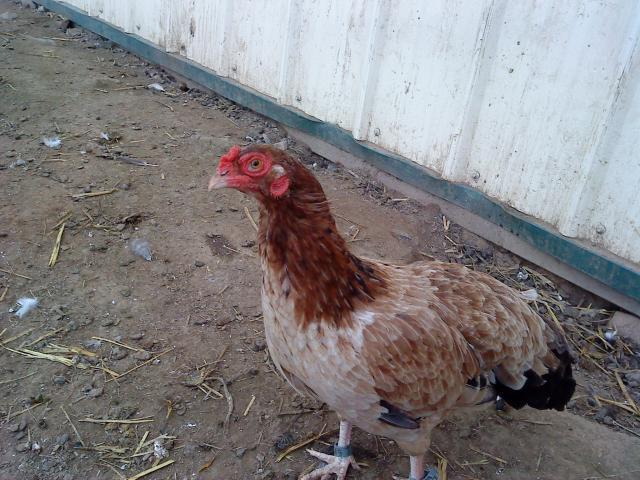Quote:
These birds are now with Dan Wake, but like I said: he doesn't show them. I belive he may have breed some, but his Sebrights are his focus (and it shows). I can speak with great confidence in the fact that those pictures, the first one for sure, were taken on his property from what I can understand. The set-up of the buildings and fence is exactly what he has on his property. Oh well, soon enough (later in spring or early summer) they will be relocated to the foothills of NE Oregon.
I haven't really seen what the black markings look like, but check this out - lots of examples of melanisers and pattern explanations:
http://www.edelras.nl/chickengenetics/mutations1.html#gen_mut_pheomelanin
This does not completely apply to this convo, but it makes sense: "As an elementary exercise, lets build a white chicken. We can start with wild-type background, e+, and require our bird to have two copies of this gene. We can suppress the red in the chicken by adding the silver gene, S, which has the effect of changing red to white. Black is suppressed (changed to white) by the dominant white gene, I, however this gene is leaky (see the table for comments) and allows black specks through. A good helper gene in this situation is the Columbian gene, Co, since it is a restrictor of black. Although this set of genes is not the only set that will yield a white chicken, it is one of the ways a white chicken can be obtained." Maybe the expression of black stripes has something to do with what sort of white Cubalayas in the states carry.
"e^Wh, Dominant Wheaten Without Columbian (Co) Wheaten down is a light cream for both sex-linked silver and gold. One cannot distinguish silver from gold with any accuracy on dominant wheaten. Heterozygotes can have varying amounts of striping. Some New Hamps have light reddish stripes on their backs at hatch. This may be due to heterozygousicity or some other modifiers in these lines. With Co wheaten downs are easily sexable. There is a high degree of difference between silver and gold wheaten down when Columbian is present. This is why commercial white-tailed reds have dominant Wheaten and Columbian."
"ey, Recessive Wheaten Sometimes pictured as being yellow but more brown than e^Wh. Both are said to be cream in color. Recessive wheatens are often called dark wheatens because the adult females have more stippling on their backs than dominant wheaten females usually have. " On the same subject, same site different page: "Recessive wheaten - Female: resembles dominant wheaten with more coarse black stippling on breast and back. Males are wild type."
Source:
http://sellers.kippenjungle.nl/page2.html
Source:
http://sellers.kippenjungle.nl/page3.html - first off, a pair:
- first off, a pair:








